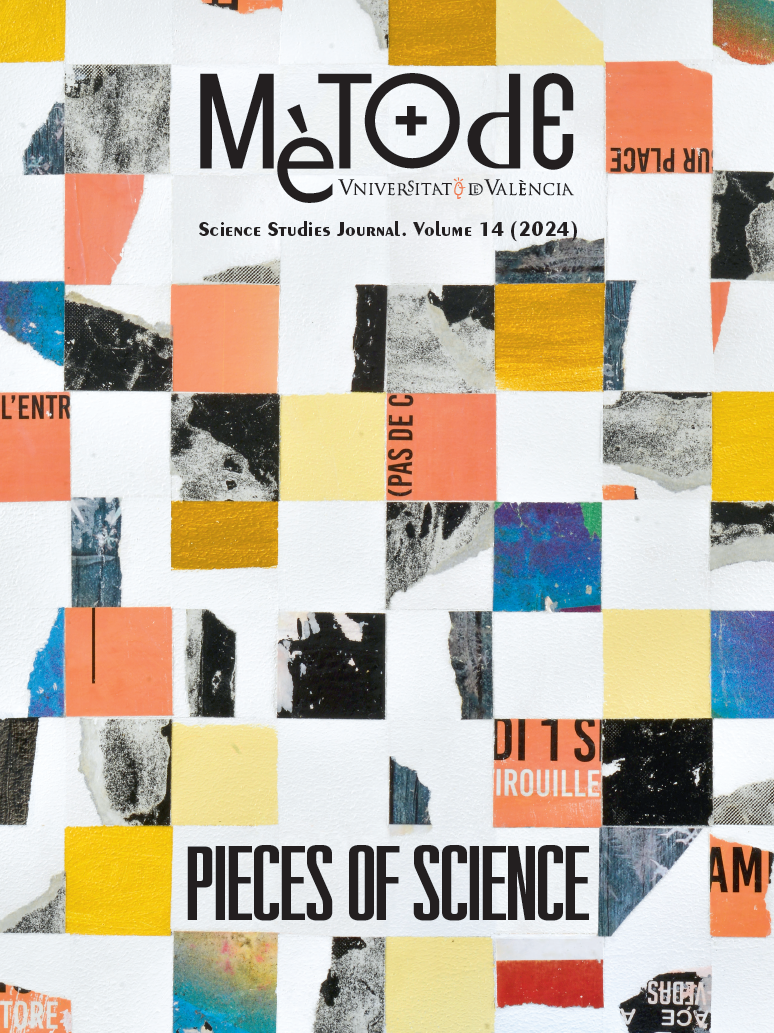Scientific photography and animal behaviour: A historical perspective
DOI:
https://doi.org/10.7203/metode.14.24660Keywords:
photography, ethology, Darwin, animal behaviour, emotional expression Abstract
Abstract
Louis Daguerre imagined that his invention would be useful mainly for artistic purposes or for personal use (portraits and travel diaries, etc.), but in fact photography soon became a valuable ally of science. The observation and documentation of natural phenomena is one of the pillars of the scientific method. In this context, photography guarantees objectivity and authenticity in a way that other alternative techniques cannot. Moreover, as a visual tool, it gives us access to phenomena that cannot be perceived or processed by the human eye. A book on the expression of emotions published by Charles Darwin 150 years ago marked the beginning of scientific photography.
 Downloads
Downloads
 References
References
Badiane, A., & Font, E. (2021). Information content of ultraviolet-reflecting colour patches and visual perception of body coloration in the Tyrrhenian wall lizard Podarcis tiliguerta. Behavioral Ecology and Sociobiology, 75, 96. https://doi.org/10.1007/s00265-021-03023-2
Ekman, P. (1970). Universal facial expressions of emotions. California Mental Health Research Digest, 8(4), 151–158.
Font, E., Carazo, P., Pérez i de Lanuza, G., & Kramer, M. (2012). Predator-elicited foot shakes in wall lizards (Podarcis muralis): Evidence for a pursuit-deterrent function. Journal of Comparative Psychology, 126, 87–96. https://doi.org/10.1037/a0025446
Kettlewell, H. B. D. (1955). Selection experiments on industrial melanism in the Lepidoptera. Heredity, 9, 323–342. https://doi.org/10.1038/hdy.1955.36
Majerus, M. E. N. (2009). Industrial melanism in the peppered moth, Biston betularia: An excellent teaching example of Darwinian evolution in action. Evolution: Education and Outreach, 2, 63–74. https://doi.org/10.1007/s12052-008-0107-y
Ota, N., Gahr, M., & Soma, M. (2015). Tap dancing birds: The multimodal mutual courtship display of males and females in a socially monogamous songbird. Scientific Reports, 5, 16614. https://doi.org/10.1038/srep16614
Prodger, P. (2009). Darwin’s camera: Art and photography in the theory of evolution. Oxford University Press.
Rudge, D. W. (2003). The role of photographs and films in Kettlewell’s popularizations of the phenomenon of industrial melanism. Science & Education, 12, 261–287. https://doi.org/10.1023/A:1024031432066
Sabater Pi, J. (1978). El chimpancé y los orígenes de la cultura. Promoción Cultural.
Schleidt, W. M., & Oeser, E. (2011). Konrad Lorenz’s use of cinematic film for studying dabbling duck courtship behaviour and the availability of historic film materials. Wildfowl, 61, 45–51.
Shaffer, L. (1991). The Tinbergen legacy in photography and film. In M. Dawkins, T. Halliday, & R. Dawkins (Eds.), The Tinbergen legacy (pp. 129–138). Springer.
Voss, J. (2010). Darwin’s pictures: Views of evolutionary theory, 1837-1874. Yale University Press.
Downloads
Published
How to Cite
-
Abstract844
-
PDF166
Issue
Section
License
![]()
All the documents in the OJS platform are open access and property of their respective authors.
Authors publishing in the journal agree to the following terms:
- Authors keep the rights and guarantee Metode Science Studies Journal the right to be the first publication of the document, licensed under a Creative Commons Attribution-NonCommercial-NoDerivatives 4.0 International License that allows others to share the work with an acknowledgement of authorship and publication in the journal.
- Authors are allowed and encouraged to spread their work through electronic means using personal or institutional websites (institutional open archives, personal websites or professional and academic networks profiles) once the text has been published.





